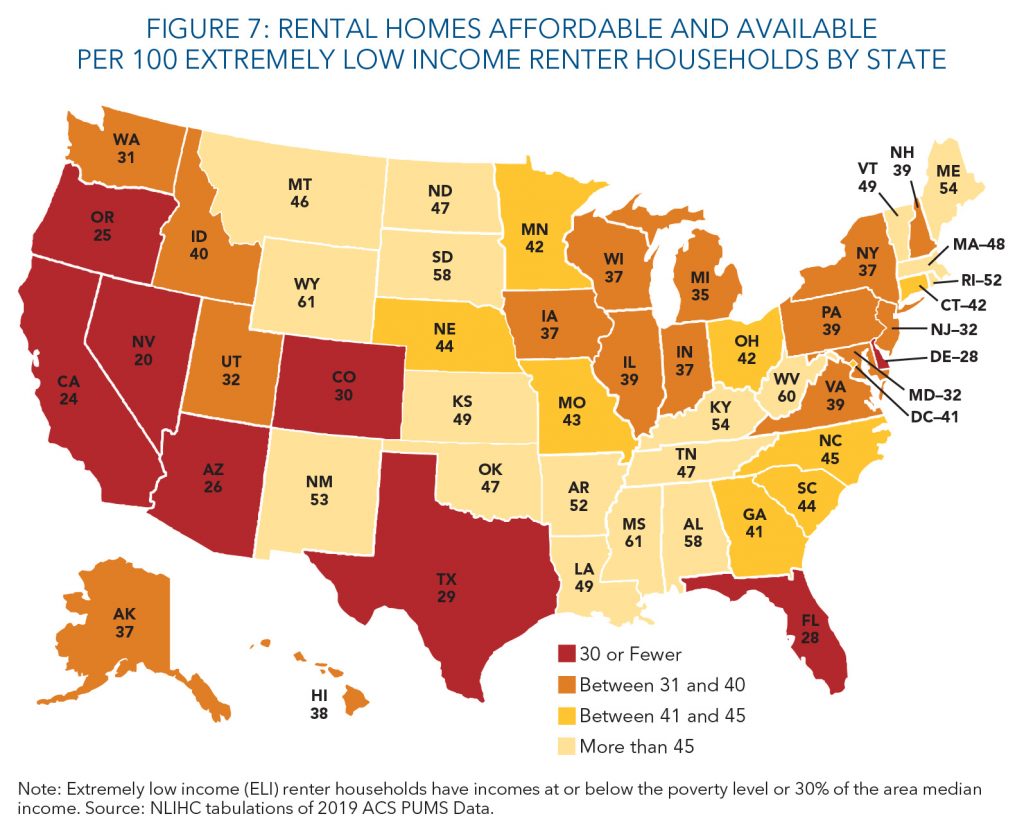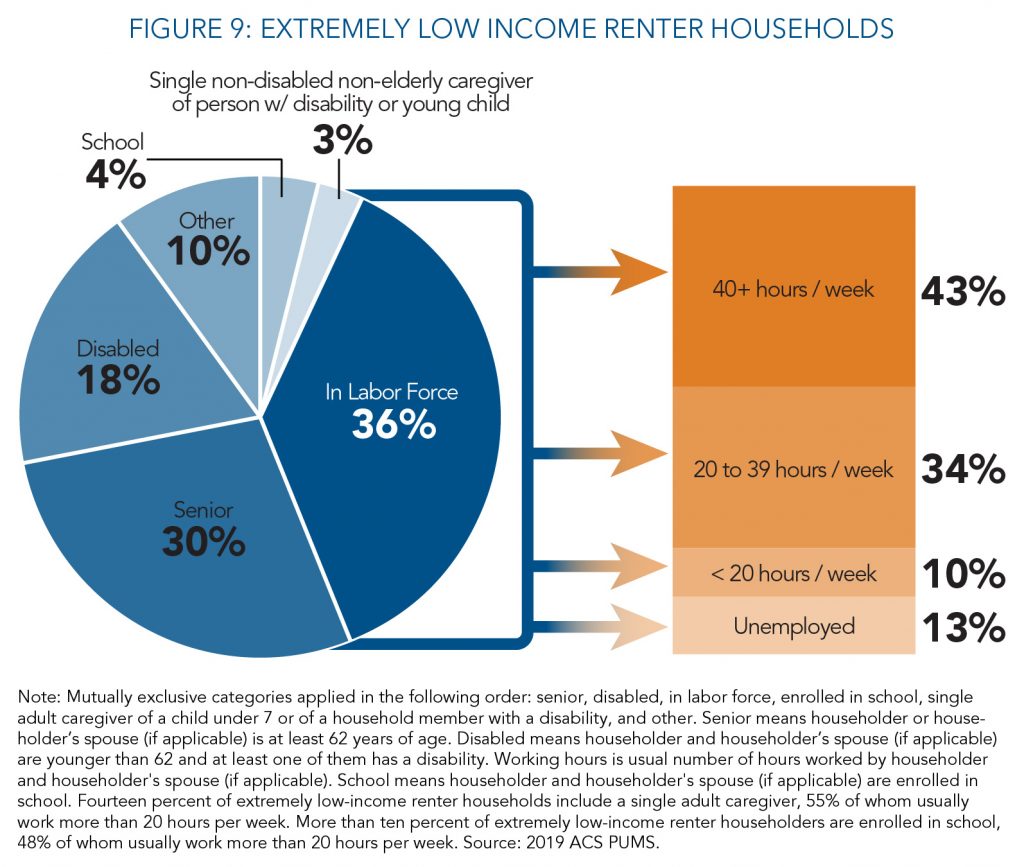
The National Low Income Housing Coalition (NLIHC) released “The Gap: A Shortage of Affordable Homes 2021” report, which emphasizes the inadequate supply of affordable rental housing in every state. According to the NLIHC, “the U.S. has a shortage of 6.8 million rental homes affordable and available to extremely low-income [ELI] renters, whose household incomes are at or below the poverty guideline or 30% of their area median income.” Inconsistent, unavailable housing for those extremely low-income family and senior households threatens more than the livelihood of those who struggle to secure housing – it jeopardizes economies, public health, education, and more.
On average, there are only 37 affordable and available homes for every 100 households across the nation, and unfortunately, Nevada ranks the lowest among all states with just 20 affordable and available homes for every 100 ELI renter households. Last year, Las Vegas tied as the metro area with the most severe housing shortage, but now, Las Vegas has the lowest supply of affordable homes for ELI renters: just 14 affordable and available homes for every 100 households.
ELI renter households include seniors, adults, and children; specifically, 48% of ELI renter households are seniors or individuals with disabilities. Forty-three percent of households include those individuals in the workforce and/or in school and those who serve as caregivers for other household members. Of those ELI renters in the work force, over 40% of them have to work 40 hours or more per week to afford their rent.
While the issue of affordable housing continues to grow with Nevada’s population, there are several actionable, practical steps to both increase the supply of affordable housing – from land availability to public-private partnerships that help the complex financing of affordable housing developments – and ensure that our existing supply of affordable housing is preserved.
At Nevada HAND, we have seen firsthand how safe, affordable homes coupled with supportive services change lives. Our homes enable our residents to improve their health, access employment and community engagement opportunities, and particip
ate in financial and educational programming. Currently, Nevada HAND’s portfolio includes 10 family, 21 independent senior, and two assisted living communities. We serve more than 7,900 children, working adults, and seniors on fixed incomes across Southern Nevada.
For more information on the NLIHC’s “The Gap” report, click here.






